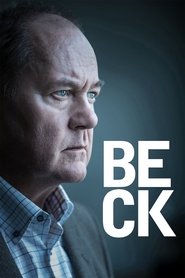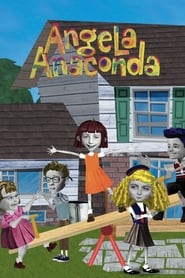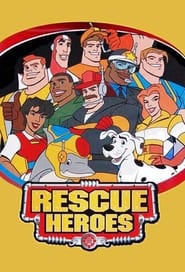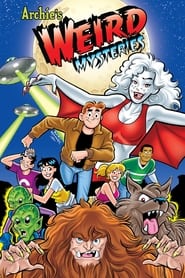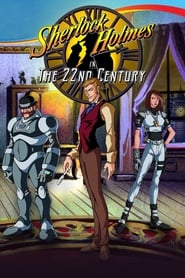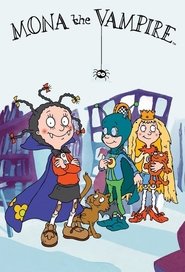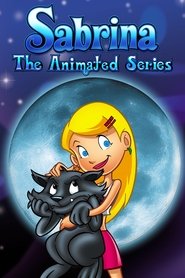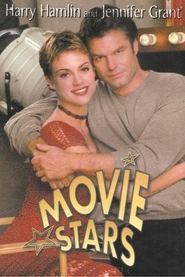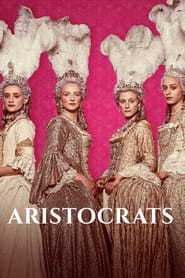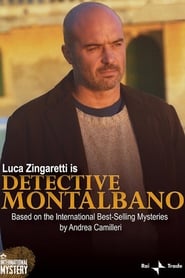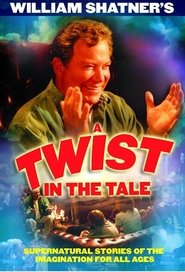New War TV Series on Hoopla - Page 78
-
Vietnam: On the Frontlines
2000
The History Channel presents documentaries profiling the decision makers and chronicling key events in the Vietnam War. -
I Witness: Dome Village
2000
Take a vacant parking lot under the freeway, in the shadows of the skyscrapers of Downtown LA, and plunk down a dozen domes. That's right, domes. What you get looks a little like an outer space encampment, but it's really a transitional community intended to get homeless people off the streets and under a roof, hopefully on their way to the mainstream. Dome village is the brainchild of a man named Ted Hayes, who can usually be found rollerblading around the perimeter of the community or around LA's Skid Row, dreadlocks flapping in the wind. Ted's dream is to build more of these communities across the country. He wants to write up a national plan to eradicate homelessness, and he wants President Clinton to see it. It's a bit of a pipe dream, but while our videojournalists were there, he finishes the plan and gets on a plane to Washington. But will he get his proposal in the right hands? "I Witness" follows Ted and a cast of colorful associates & villagers as they fight to change the face of the homeless in America. -
I Witness: Birth of a Militia
2000
In remote La Verkin, Utah, an hour north of the Grand Canyon, a small group of believers have formed the Rocky Mountain Militia. White superiority and the fight for racial purity are among their core objectives. Our cameras take you inside a world that has never been exposed. We meet Johnny Bangerter, the leader of the Rocky Mountain Militia, along with his followers including his wife Casey, his mother Mary Lynn, his sister Mary, and David Dalby, the resident survivalist and isolationist. Hiding nothing, they put their radical and troubling beliefs right out on the kitchen table. -
I Witness: Wilderness Quest
2000
What is a parents last resort for a kid hooked on drugs and out of control? Wilderness Quest. Forcibly enrolled by their parents, without friends or their everyday crutches--drugs, sex, and TV--a group of troubled teenagers must fend for themselves during a long excursion into the wilderness. -
Beck
1999
Beck
1999
star 6.8Beck follows Swedish police officer Martin Beck and his team as they investigate various crimes. -
Little People
1999
Little People
1999
star 8Claymation show about a group of savvy ethnically diverse preschool friends who have fun adventures in their idyllic little town, Discovery City, and are always ready to help animals and others in need. Based on a popular toy brand. -
Angela Anaconda
1999
Angela Anaconda
1999
star 5.2A unique style of cutout animation tells the story of eight-year-old Angela, her weird and wonderful friends, and her sworn enemy--snobby Nanette Manoir. -
Rescue Heroes
1999
Rescue Heroes
1999
star 7.3Rescue Heroes is a Canadian/American animated children's television series produced by Nelvana, CBC and CBS. Based on the 1995 Fisher Price toy line of the same name, the series tracks the adventures of a team of globetrotting emergency responders who save people from a variety of disasters. Rescue Heroes stars Norm Spencer as Billy Blazes, Lenore Zann as Wendy Waters and Martin Roach as Rocky Canyon. Three seasons of Rescue Heroes were produced and aired from 1999 until 2002. YTV aired the series as a feature of their "Playtime" block, and re-runs of the series were aired internationally. In 2003, Nelvana released Rescue Heroes: The Movie. -
Archie's Weird Mysteries
1999
star 6.5Things are getting weird in Riverdale, home of all-American boy and high school newspaper reporter, Archie Andrews. Ever since an experiment in the high school physics lab went awry, Riverdale has become a magnet for the stuff of which “B-Movies” are made. -
Sherlock Holmes in the 22nd Century
1999
star 7.7Sherlock Holmes in the 22nd Century is an animated television series, in which Sherlock Holmes is brought back to life in the 22nd century. The series is a co–production by DiC and Scottish Television and was nominated for a Daytime Emmy for Special Class Animated Program. -
Mona the Vampire
1999
Mona the Vampire
1999
star 7.6Follows the adventures of Mona Parker ("Mona the Vampire"), as well as her two best friends, and her pet cat, Fang, as they imagine themselves confronting a new supernatural foe, or solving a supernatural mystery, in every episode. -
Sabrina: The Animated Series
1999
star 6.8An animated prequel to the live-action show "Sabrina, the Teenage Witch," the series features 12-year-old Sabrina Spellman, who's half mortal and half witch. Though few people know of her powers, and her mortal uncle frequently warns her not to use her magic to solve problems, Sabrina still borrows spells from the Spookie Jar and gets into trouble with her friend Harvey. -
Sonic Underground
1999
Sonic Underground
1999
star 6.9Sonic, Sonia, and Manic are the children of Queen Aleena Hedgehog, the rightful ruler of Mobius, and are pursued relentlessly by Doctor Robotnik and his bumbling bounty hunters sidekicks, Sleet and Dingo. As infants, the siblings were separated and placed in hiding to fulfill a prophecy made by the Oracle of Delphius that the triplets would grow up to find their estranged mother, overthrow Robotnik, and take their places once more as Mobius' rightful rulers. -
Movie Stars
1999
Movie Stars
1999
star 8Movie Stars is an American sitcom that aired on The WB from 1999 to 2000. It stars Harry Hamlin and Jennifer Grant as famous Hollywood actors trying to raise their children. -
Jackson's Wharf
1999
Jackson's Wharf
1999
star 6Jackson's Wharf was a New Zealand television series created by Gavin Strawhan and Rachel Lang. Set in a fictional coastal town, the series told the story of a sibling rivalry between brothers Frank, the town cop, and Ben Jackson, a big-town lawyer. After inheriting the local pub from his recently deceased father, Ben returns to the small town with his family, with his arrival bringing its fair sheer of drama and conflict to the small township. -
Aristocrats
1999
Aristocrats
1999
star 6.1Based on a true story, Aristocrats draws back the curtain on an 18th century English family near the summit of society, revealing a tapestry of romance, prejudice, infidelity, and revolution. -
I Witness: Polygamy
1999
I Witness: Polygamy
1999
Meet the Josephs, one big happy family. Like most families, they juggle the everyday issues of work, child care, making ends meet, and finding time to sit down to dinner together. They are your stereotypical family unit with one major exception -- one husband, many wifes. -
Inspector Montalbano
1999
Inspector Montalbano
1999
star 8.4Inspector Montalbano is an Italian television series produced and broadcast by RAI since 1999, based on the detective novels of Andrea Camilleri. The protagonist is Commissario Salvo Montalbano, and the stories are set in the imaginary town of Vigata, Sicily. In 2012 the series generated a prequel, Il giovane Montalbano. -
Bob the Builder
1999
Bob the Builder
1999
star 5.9Bob the Builder and his machine team are ready to tackle any project. Bob and the Can-Do Crew demonstrate the power of positive thinking, problem-solving, teamwork, and follow-through. The team always shows that “The Fun Is In Getting It Done!” -
A Twist in the Tale
1999
A Twist in the Tale
1999
star 4.2A Twist in the Tale is a 1998 TV series starring William Shatner. Willam Shatner's A Twist In The Tale was a 15 episode short lived television series in the late 1990s. Every week the narrator/host would have a group of children he would tell a story to. The main children were always in the story itself.
 Netflix
Netflix
 Amazon Prime Video
Amazon Prime Video
 Apple iTunes
Apple iTunes
 Apple TV Plus
Apple TV Plus
 Disney Plus
Disney Plus
 Google Play Movies
Google Play Movies
 Paramount Plus
Paramount Plus
 Hulu
Hulu
 HBO Max
HBO Max
 YouTube
YouTube
 fuboTV
fuboTV
 Peacock
Peacock
 Peacock Premium
Peacock Premium
 Amazon Video
Amazon Video
 The Roku Channel
The Roku Channel
 AMC+
AMC+
 Kocowa
Kocowa
 Hoopla
Hoopla
 The CW
The CW
 Vudu
Vudu
 Starz
Starz
 Showtime
Showtime
 PBS
PBS
 Pantaflix
Pantaflix
 FXNow
FXNow
 Tubi TV
Tubi TV
 Kanopy
Kanopy
 Comedy Central
Comedy Central
 Crunchyroll
Crunchyroll
 Microsoft Store
Microsoft Store
 Redbox
Redbox
 Sun Nxt
Sun Nxt
 ABC
ABC
 DIRECTV
DIRECTV
 Crackle
Crackle
 Fandor
Fandor
 Plex
Plex

